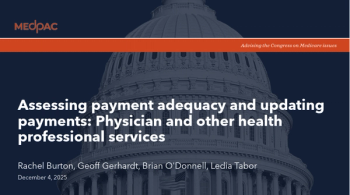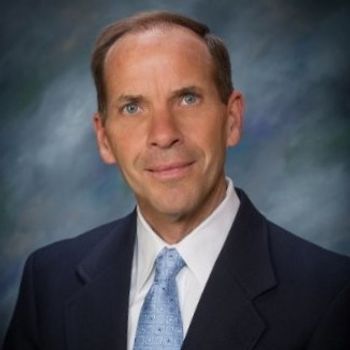
- August 10, 2018 edition
- Volume 95
- Issue 15
How physicians are assisting peers to overcome burnout
The fact that such a high percentage of physicians are experiencing symptoms of burnout has begun to shift the focus on how this issue is being addressed.
There is no question physician burnout is high as some estimates put it at more than 50 percent of the current practicing population in the United States.
This is troubling as burned-out physicians retire early, reduce the time they devote to clinical work, or leave medicine entirely. As a result, patients have longer waits to see their doctor or, worse yet, are losing their trusted physician forever.
Additionally, burnout can lead to serious emotional and physical health consequences for physicians themselves.
Here are some programs that enable physicians to help themselves and their peers overcome burnout.
The AMA’s immediate past president, David O. Barbe, MD, MHA, says “an energized, engaged, and resilient physician workforce is essential to achieving national health goals. Yet burnout is more common among physicians than other U.S. workers, and that gap is widening as the bureaucracy of modern medicine inflicts a mounting toll on physicians.”
As part of AMA’s commitment to help physicians, it has created STEPS Forward, an interactive practice transformation series that provides proven, physician-developed strategies for confronting common challenges in busy medical practices, allowing physicians to devote more time to caring for patients.
Barbe says the AMA is striving to help physicians navigate and succeed in a continually evolving healthcare environment and it is imperative to promote engagement and combat the issues leading to burnout.
“Evidence suggests that improvement is possible, investment is justified, and return on investment measureable,” he says.
This training program promotes peer-to-peer burnout solutions through seven components. These include establishing wellness as a quality indicator for the practice; organizing a wellness committee; distributing a yearly wellness survey; holding regular meetings with practice leaders or staff to talk about data and interventions to promote wellness; initiating selected interventions; repeating the survey over the course of the year to evaluate progress; and looking for answers within the data, refining the interventions, and working to continually make improvements.
“Analysis has shown that engagement levels with STEPS Forward’s practice transformation modules have been high, with 86 percent of participants indicating their likeliness to implement their learnings,” Barbe says. “What’s even more encouraging is the feedback we’re getting from physicians saying they can finally get back to spending time with their patients, and how good that feels.”
The executive and physician leadership at Centura Health Physician Group, which includes more than 900 providers and 6,000 physician partners in Colorado and Kansas, has recognized the need to develop a comprehensive program to address physician well-being. The program is being developed with the goal of a system-wide comprehensive approach for its members to prevent burnout.
“Our goal is to address as many areas as possible which contribute to decreased physician well-being,” says Lief Sorensen, MD, specialty medical director with Centura Health. “As our program progresses, we hope to offer support groups, mentoring options for new physicians, a provider-specific onboarding process, options for collaboration and socializing with other physicians, and more.”
Moreover, the fact that such a high percentage of physicians are experiencing symptoms of burnout has begun to shift the focus on how this issue is being addressed among the entire healthcare population. Previous efforts focused mostly on resiliency and coping strategies. While these efforts continue to be very valuable, Sorensen notes there is now increasing attention toward addressing the environments where physicians are working.
“Physicians understand the pressures other physicians are under better than anyone,” he says. “Historically, physicians are very poor at admitting we are having concerns. We often just internalize our stresses and fears and are scared to discuss with others. One of the most valuable things I see happening ,as more physicians are aware of these issues and start talking about them, is simply the understanding that we are not alone.”
The NCPHP, based in Raleigh, N.C., assists more than 3,000 physicians and other licensees of the North Carolina Medical Board with burnout and other problems that may affect their ability to deliver high-quality care and services to their patients.
Clark Gaither, MD, medical director of the NCPHP, notes the program was created to assist physicians with issues that would put their own health or the safety of their patients at risk. “Over the years, in addition to alcoholism, drug addiction, and mental health issues, we have seen a rise in the number of participants with job-related burnout,” he says. A full third of the health issues the NCPHP sees can be directly tied to burnout and another third is indirectly associated with burnout.
The program is designed to give providers a compassionate, caring, and confidential pathway to get the help they need. If needed, it facilitates professional assessments, therapies, treatment, and ongoing follow-up. Sometimes monitoring is also employed to give physicians the support they need early in their recovery.
Articles in this issue
over 7 years ago
Funny Bone: Work-life balanceover 7 years ago
How my life changed: transitioning to direct primary careover 7 years ago
Take a proactive approach to bad debtover 7 years ago
Artificial intelligence in primary careover 7 years ago
Manage practice workflow to reduce burnoutover 7 years ago
How to properly document and bill for venipunctureover 7 years ago
Restoring the joy in medical practiceover 7 years ago
Physician burnout led to my retirementNewsletter
Stay informed and empowered with Medical Economics enewsletter, delivering expert insights, financial strategies, practice management tips and technology trends — tailored for today’s physicians.
















